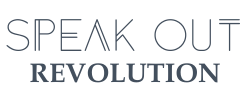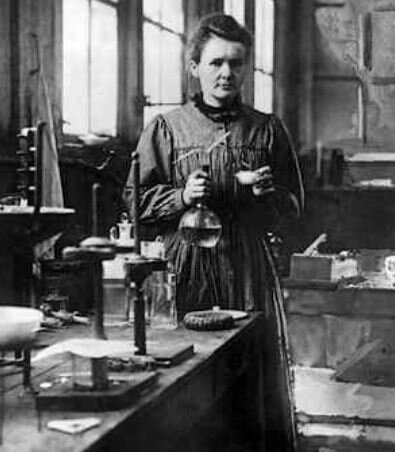Why we need to stop saying: “You don’t look like a... {Insert profession}”
With entire professions falling victim to the ‘male, pale, stale’ label, can we really diversify workforces while it remains acceptable to say that women don’t look like they should be doing their jobs?
When the first statement we make to a woman who shares her profession in a traditionally male field is: “You don’t look like a {Insert profession}” we verbalise society's unconscious bias that acts to constrain women to acceptable gender based roles. Perhaps we need to stop telling women what they do and don’t look like when it comes to their jobs and start asking ourselves why we care to comment at all?
In this article I share my views on this commonplace throwaway phrase, it’s negative implications and steps we can each take to live and work more inclusively.
Note that this article talks in ‘gender binary’ terms however, I believe the content applies to individuals identifying as non-binary given that the core topic speaks to assumptions based on appearance.
You don’t look like a…{the list is so long!}
I’ve personally heard this phrase at least a thousand times. In fact I’ve heard it so many times, for so many different things, from so many different people. When I really reflect on what people have historically told me I don’t look like, by deduction, the only thing I’m left with that I do look like is a mother. Which is fascinating.
In my early career working in science, it appeared to be so shocking to people that I was a physicist it would often take a good 5 minutes to get through any sort of introduction. Which typically covered me being made aware that I didn’t look like a physicist, playful assertions that I definitely wasn’t and repeating questions about whether I really (really) was. By the end of which you might imagine, I wasn’t sure who needed the assurance - them or myself.
To compound matters, I have naturally gravitated to interests and pastimes that people think my face shouldn’t want to do! From not looking like a plumber, car mechanic or pilot I find it interesting that no-one ever said I don’t look like a baker (which ironically I demonstrate the least amount of skill in!)
Which begs the question in my mind, why do we associate appearance with an individual's past times, interests or profession? (And... Why has no one heard about Marie Curie?!) Marie Curie was a Polish physicist and chemist who undertook pioneering work in the field of radioactivity. She was the first person to win the Nobel prize twice and in 2 different fields!
Hello gender stereotyping!
We’re conditioned from a young age to understand what constitutes ‘acceptable’ male and female behaviours, which is the basis of gender stereotyping. From the toys we play with to the clothes we wear we're exposed to constant messaging about how genders should look, behave and interact.
This permeates our subconscious and leads to us to perpetuate these stereotypes into adulthood.
In social psychology, a stereotype is an over-generalized belief about a particular category of people. It is an expectation that people might have about every person of a particular group.
As highlighted by the Institute of Physics publication Gender stereotypes and their effect on young people gender stereotypes can have an 'adverse effect on all genders’ and ‘shape self-perception, attitudes to relationships and influence participation in the world of work’.
So what sounds like a harmless assertion ‘You don’t look like…’, in a sea of harmless assertions , actually has the cumulative effect of influencing who does and doesn’t feel welcome in our respective professions. The logical outcome being, without intervention, we will continue to see those who challenge the stereotype being unconsciously excluded.
Breaking the pattern
My experience highlights one perspective but we know that gender stereotyping influences diversity and inclusion in the workforce in far more complex ways.
From the expectations that men only take statutory minimum paternity leave (often reinforced by enhanced business maternity but not paternity pay) to the reality that women are paid less than an equivalent man for the same work. Gender stereotypes harm all genders inside and outside of work.
If we really want to live and work more inclusively we need to move away from this idea that gender has any bearing on an individual’s aspirations, potential and decision making.
So what can we each do to break the stereotype loop? Here’s my thinking...
Ask questions instead of making assertions
Find yourself in a position where you’re about to say “You don’t look like a {Insert profession}”? Replace it with “I’d be interested to know more about what you do as a {Insert profession}”. A double win where your action doesn’t act to reinforce the stereotype and you actively challenge your own bias by updating your perception.
Promote, promote, promote!
If you work in a field where you are underrepresented or do not conform to the stereotypical member of that workforce everyday is an opportunity to challenge stereotypes. Proactively and consistently promote your presence in the field: Write the article, lead the workshop and speak at the conference! Representation matters.
For those who are less inclined to put themselves out there, Krystina Pearson-Rampeearee of Aviate Her has created a great solution for you to quietly but impactfully challenge stereotypes. Check out her enamel pins to showcase diversity here, i’ve just placed my order...
Be a majority ally
If you’re in the majority it isn’t enough to avoid reinforcing gender stereotypes. Mentor those in the minority, challenge unconscious bias by speaking out and actively work to understand and remove the barriers which prevent everyone from feeling included and contributing in our workplaces
If you’ve made it this far, I’d love to know... What have you been told you don’t look like?
Thanks for reading!





